234items
-

Turpentine
テレピン
Turpentine
Turpentine is a plant-based oil painting medium used in the production of oil works to adjust the viscosity and concentration of the paint and to dilute dry oil. Painting mediums used in oil colors comprise mainly two types: volatile and dry oil.
-
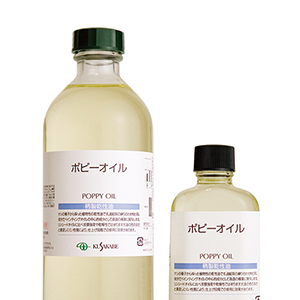
Poppy Seed Oil
ポピーオイル
Poppy Seed Oil
Poppy seed oil is an oil painting medium used in the production of oil works to improve the fixing capacity, adjust the viscosity and concentration, and enhance the glossiness of the paint. It is also included as a pigment fixing component (main vehi
-
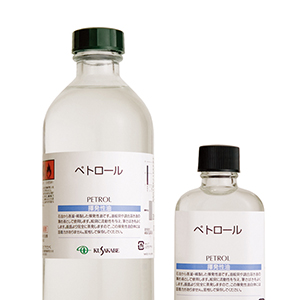
Petrol
ペトロール
Petrol
Petrol is a mineral-based oil painting medium used in the production of oil works to adjust the viscosity and concentration of the paint and to dilute dry oil. Painting mediums used in oil colors comprise mainly two types: volatile and dry oil. Pet
-
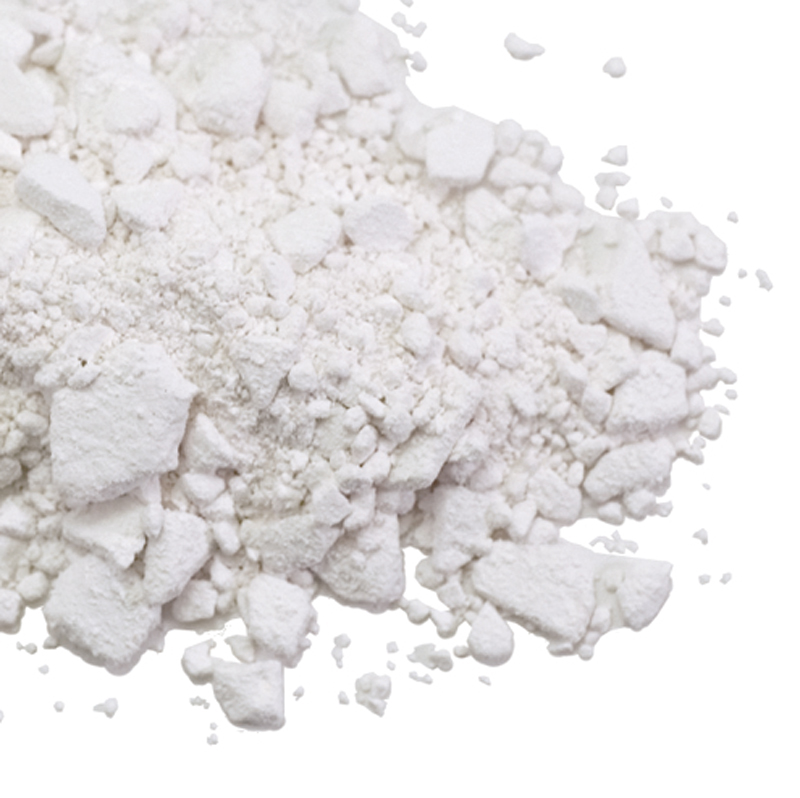
Gofun (Chalk)
胡粉
Gofun
Gofun is a white pigment made from the shells of oysters, clams, scallops, etc. used in Japanese paintings. Its main component is calcium carbonate and is characterized by the fine particles which produce a smooth matt texture. Gofun itself has no ad
-

Stamp Ink
スタンプインク
Stamp Ink
Stamp ink is the ink used for seals and rubber stamps. It is typically kept in a special container filled with ink called a stamp pad. A stamp pad contains a flat piece of cloth (pad) which holds the ink and has a lid to prevent the ink from drying a
-
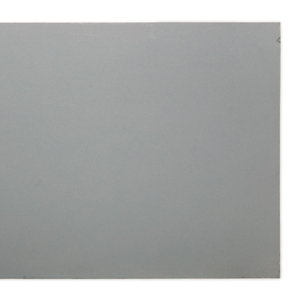
Zinc Plate
ジンク板
Zinc Ban
A zinc plate is a metal plate that is used in lithography and intaglio printing. Zinc plates were often used as a substitute for stone, aluminum and copper plates but nowadays, they are not used as frequently as before. They came to be used in pl
-
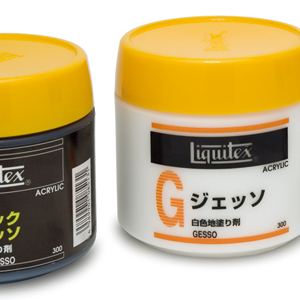
Gesso
ジェッソ
Gesso
Gesso is a milky white liquid ground made of an acrylic resin emulsion medium combined with an extender pigment such as titanium white and calcium carbonate. It is mainly used to coat substrates, fix paint and supplement coloring. Due to its strong c
-

Lightness
明度
Meido
Achromatic and chromatic colors both have dark and light colors. Lightness (sometimes called value) describes the degree of this variation in brightness. It is one of the three attributes of color (hue, lightness and saturation). Lightness is clos
-
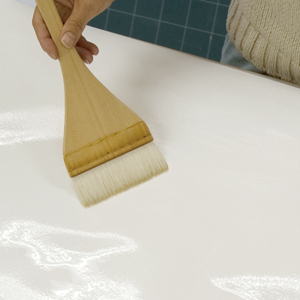
Water Tensioning
水張り
Mizubari
When producing watercolors and Japanese paintings etc., the paper is first stretched on a wooden panel etc. This process utilizes the characteristic of paper whereby it expands when moistened with water and shrinks back to its original size as it dri
-
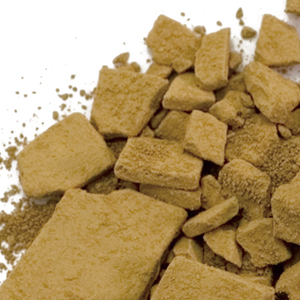
Suihi-enogu (Mud Pigment)
水干絵具
Suihi-enogu
Suihi-enogu is a nihonga paint containing fine particles derived from natural mud or made by dyeing gofun or white clay. It spreads well and is characterized by the matte texture it produces. It is often sold in slabs and is ground into powder before
-
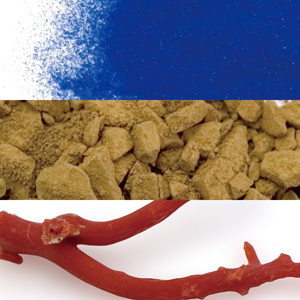
Nihonga Paint
日本画絵具
Nihonga-enogu
Since ancient times, humanity has used mineral ores, soil, animals and plants in the natural environment around them to produce coloring materials. This original form of paint has been handed down to the present day in the form of nihonga paint. In m
-

Corrugated Cardboard
段ボール
Danbōru
Corrugated cardboard is made of thick, hard paper (paperboard) and consists of a corrugated core with a liner on one or both sides. The characteristic wave-shaped layer is called the flute. Corrugated cardboard is divided into types based on the numb
-

Tone
色調
Shikichou
Tone (or color tone) generally refers to the differences in tints and shades produced from the relationship between lightness and saturation. All colors have a tone such as bright and dark, deep and pale, strong and weak, etc. Light colors can be
-
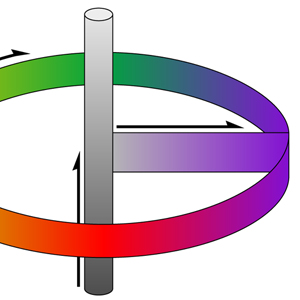
Three Attributes of Color
色の三属性
Ironosanzokusei
Hue, lightness and saturation are referred to as the three attributes of color. The human eye perceives light that is absorbed and reflected by, or transmitted through, an object as color, but its appearance will differ according to the hue, lightnes
-
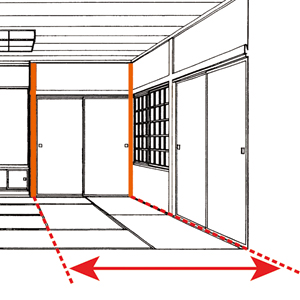
Ken
間
Ken
Ken is a unit of length in the traditional Japanese system of measurement known as shakkanho. Shakkanho was established under the Weights and Measures Act of 1891. Under this law, "shaku" was defined as the unit of length, "sho" as the unit of vol
-
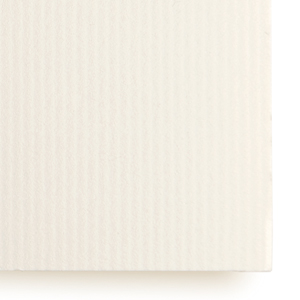
Muse Cotton
ミューズコットン
Muse Cotton
Muse Cotton (official name: OK Muse Cotton) is a paper textured in a distinct stripe pattern that is available in a rich variety of colors and produced by Oji Paper Co., Ltd of Japan. It is used in a wide range of applications ranging from packaging,
-
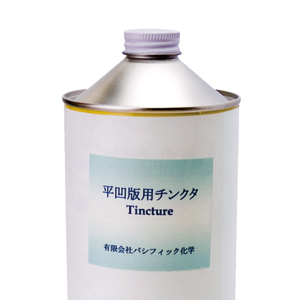
Tincture
チンクター
Tincture
Tincture is a liquid produced by dissolving powdered asphalt, grease, beeswax, etc. in solvent such as turpentine, and is used to reinforce the oil content of the drawing when making metal lithograph plates. Tincture contains a lot of fat. Replaci
-
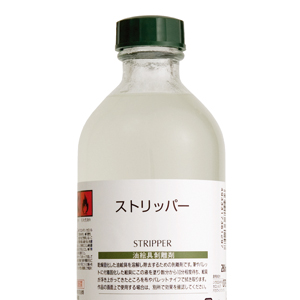
Paint Stripper
ストリッパー
Stripper
Paint stripper is a liquid or gel used to dissolve and remove dry, hardened oil paint. It is used by applying a few drops on hardened paint on brushes and palettes, leaving this for around 10 minutes until the paint is lifted off the surface, and
-

Screen
スクリーン
Screen-waku
A screen is a piece of mesh woven in a lattice which is used for the production of screen prints. The screen is stretched on a frame and the holes in areas other than the image are filled. When printing, ink is placed over this screen and forced thro
-
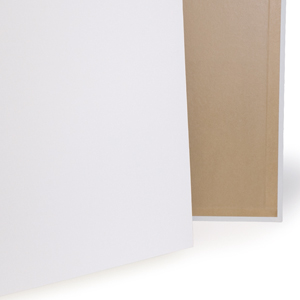
Canvas Board
キャンバスボード
Canvas Board
A canvas board is a support for oil painting made by pasting canvas or paper textured in a cloth pattern on a plywood board or cardboard. Oil paintings are generally done on thick panels and on canvases stretched on wooden frames, but canvas board
-
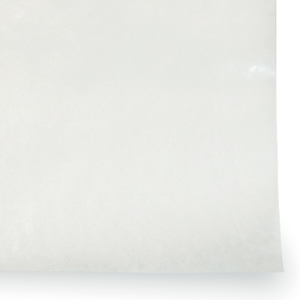
Slip Sheet
あい紙
Aishi
A slip sheet is a thin piece of paper slipped between print and water color art pieces done on paper for protection when storing them. With paper, mold and oxidation can cause yellowing and deterioration. Ink and color materials on the surface of
-

Chromatic and Achromatic Colors
無彩色・有彩色
Musaishoku/Yuusaishoku
The vividness and intensity of a color is represented by its saturation. Depending on the presence or absence of this saturation, colors can broadly be divided into chromatic and achromatic colors. An achromatic color is a one that lacks hues such as
-

Color Solid
色立体
Irorittai
A color solid is a systematic, three-dimensional representation of colors in relation to each other. A systematic method of notation is required to describe colors accurately. This system for displaying color is called the color order system and c
-

Saturation
彩度
Saido
Saturation (or chroma) is one of the three attributes of color (hue, lightness and saturation) and refers to the intensity and vividness of color. A clear color has a high saturation and a dull color a low saturation. This means a color with the same
-
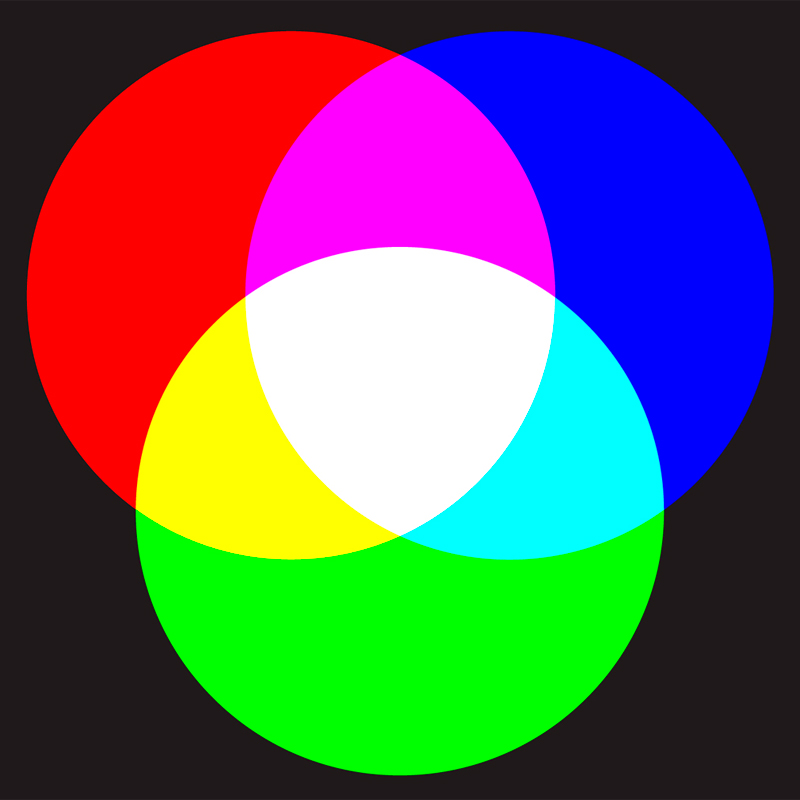
Additive Mixture
加法混色
Kahoukonshoku
Additive mixture or additive color mixture is the phenomenon in which brightness is increased with the mix of light source colors. Color can be divided into light source color, which is the color of the light itself, and object color, which is the
-

Kumohada Mashi (Kumohada Hemp Paper)
雲肌麻紙
Kumohadamashi
Kumohada mashi is a thick, strong washi paper made from hemp and mulberry. It is mainly used as a support medium for Japanese paintings. The name kumohada (literally, cloud surface) comes from the fact that the fibers of this paper are entwined so th
-

EPS
EPS
EPS
EPS, which stands for Encapsulated PostScript, is a file format for graphic data which uses a technology known as PostScript. It carries the extension, .eps. Because it can include vector data and bit map data, it is used as the file format for both
-
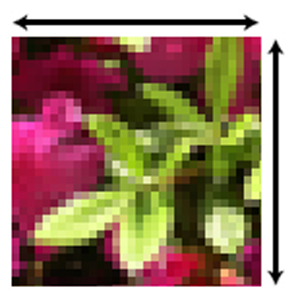
DPI
dpi
dpi
DPI stands for dots per inch and is a unit which is used to represent the resolution of input devices, such as scanners, and of output devices, such as monitors and printers. It is sometimes used in the same sense as PPI (pixels per inch), a unit of
-
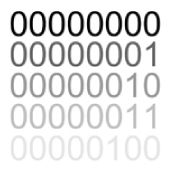
Byte
byte
byte
A byte is a unit of information in computing. Generally, 1 byte consists of 8 bits and can express 8 binary digits (i.e. 256 types) of information. If used to express whole numbers, a single byte can express 256 whole numbers (e.g. 0 to 255, -128 to
-

BMP
BMP
BMP
BMP is the standard file format for bit map data in Windows (There is also a slightly different BMP in the OS/2 format). It carries the extension, .bmp. BMP files can be viewed and edited with the Windows accessory program, MS Paint, and is compatibl
-

Glue Solution
膠水
Nikawasui
Nikawasui (literally, glue water) is used in the production of Japanese painting, mainly for fixing paint onto the surface and is a solution made by dissolving glue in water. The basic method of making this glue solution from sanzenbon nikawa (hid
-
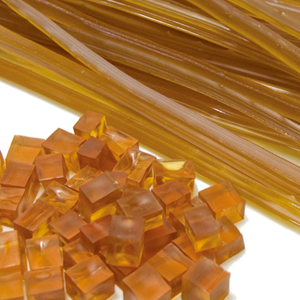
Glue
膠
Nikawa
Glue has been used since the days of ancient murals and primitive paintings, and continues to be an important material for fixing paint onto the surface in the production of Japanese paintings today. It is made by boiling animal bones, hide, intes
-

Sizing Solution
礬水液
Dousaeki
A dosa sizing solution is a mixture of glue solution and alum for treating washi, eginu (silk canvas) and boards used as the support medium for Japanese paintings to prevent ink from smudging. When gilding with gold and silver leaf, applying sizing s
-

Quantization
量子化
Ryoushika
This is the process of converting analog data such as images and audio into digital data is called analog-digital (A-D) conversion. A-D conversion is performed via two processes: sampling and quantization. Quantization is the process of converting sa
-

Planographic Lacquer
平版用ラッカー
Heihan-yourakkā
Planographic lacquer is a pink volatile organic solvent used in the process of making metal lithography plates to reinforce the drawing. Compared to stone plates, aluminum and other metal plates are less sensitive to oil. Therefore, a coat of plan
-

Sampling
標本化
Hyouhonka
The process of converting analog data such as images and audio into digital data is called analog-digital (A-D) conversion. A-D conversion is performed via two processes: sampling and quantization. Sampling is the process of measuring continuously ch
-
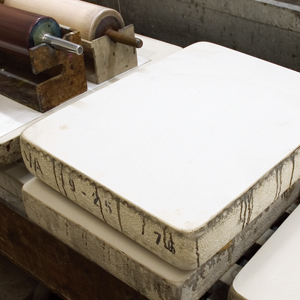
Stone Plate
石版石
Sekihanseki
Stone plates are generally a piece of natural limestone carved into a rectangular plate shape for use as a lithograph plate. The surface of the plate is polished flat with emery or something to that effect before it is used. The chief component in th
-
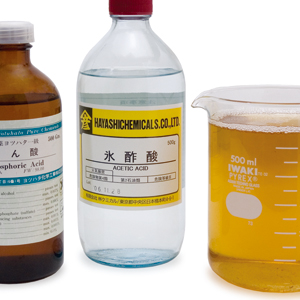
Platemaking Solution
製版液
Seihan-eki
Platemaking solution desensitizes the non-plotting areas when producing a lithograph with a metal plate. It is a mixture of phosphoric acid and glacial acetic acid added to a gum Arabic solution and is also called gum etch solution. Lithographic p
-

Platemaking Ink (For Lithography)
製版インク(リトグラフ用)
Seihan-inku
Platemaking ink used in lithography is made of pigment and linseed oil and used in lithograph printing plates. Platemaking ink reinforces the lipophilicity in parts that have been drawn with crayon and tusche and also protects those parts from the
-
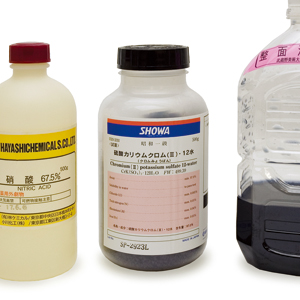
Resensitizing Solution
整面液
Seimen-eki
Resensitizing solution is used to adjust the sensitivity of lithographic plates to grease. The process differs for metal plates and stone plates. The surface of metal plates begins to oxidize as soon as it is roughened and therefore the solution i
-

Pure Color
純色
Junshoku
A pure color is the color with the greatest saturation in each hue. Colors can broadly be divided into achromatic colors such as white, grey and black, and chromatic colors, which are colors with hues, such as red, yellow and blue. Pure colors of
-

Shaku
尺
Shaku
Shaku is a unit of length in the traditional Japanese system of measurement known as shakkanho. Shakkanho was established under the Weights and Measures Act of 1891. Under this law, "shaku" was defined as the unit of length, "sho" as the unit of volu
-

Mordant
腐蝕液
Fushoku-eki
A mordant is a liquid which corrodes metal used in indirect intaglio techniques (etching) to form grooves on the plate. Common substances used include aqueous ferric chloride and aqueous nitric acid solutions. An aqueous ferric chloride solution i
-
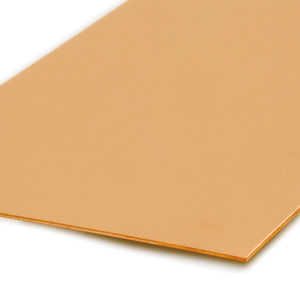
Copper Plate
銅板
Douban
Copper plate is a plate of copper pressed out for use in copperplate (intaglio) printing. In days gone by, iron plate was used for intaglio printing but copper came to be used from around the late 1400's when artists such as Dürer were actively pr
-
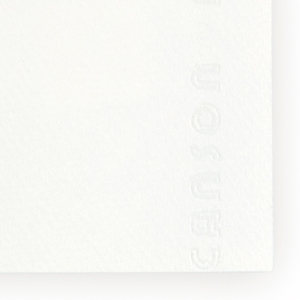
Canson Mi-Teintes
キャンソン ミ・タント
Canson Mi-Teintes
Mi-Teintes is a line of paper produced by the French paper manufacturer, Canson, in an extensive range of colors. It is mainly used for pastels and watercolors, drafting and designs, architectural perspective drawings, and paper crafts. It is an a
-
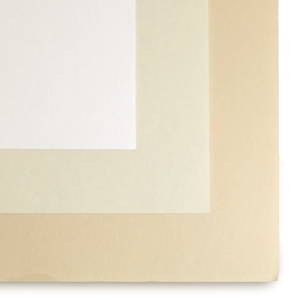
Shin-Torinoko Paper
新鳥の子紙
Shin-torinokoshi
hin-torinoko (new torinoko) paper is a Western paper made with machines imitating the texture of torinoko paper. Because it is made of wood pulp and can be mass produced, it is relatively inexpensive and is often used for test printing woodblocks and
-
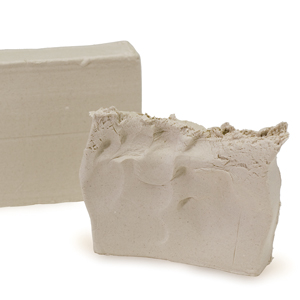
Paper Clay
紙粘土
Kaminendo
Paper clay is generally made of pulp mixed with glue and water, and is cheap and easy to obtain. A key feature of this product is that it hardens and becomes lighter when dried. (This is the main difference between paper clay and oil clay. Oil clay d
-

Ganpishi
雁皮紙
Ganpishi
Ganpishi is a thin, semi-transparent Japanese paper often used in wood engraving and copper plate printing. It is mainly made of bast fibers from a ganpi tree (Diplomorpha sikokiana), a plant of the Thymelaeaceae family. Ganpishi paper has a smoot
-
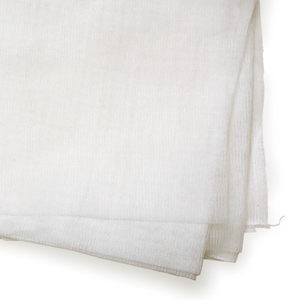
Cheesecloth
寒冷紗
Kanreisha
Cheesecloth is a loosely-woven, gauze-like fabric used in copper plate printing to wipe off excess ink from the plate surface. In the past, it was chiefly made of hemp but nowadays, it is usually made of rayon and other artificial fabric or cotton. C
-
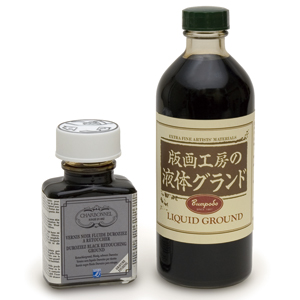
Liquid Ground
液体グランド
Ekitaigurando
Liquid ground is a liquid used in copper plate printing to make the surface of the plate corrosion proof. Applying ground shields the non-image sections and protects the plate surface from corrosion. When performing line etching and other etching
-

Watson Paper
ワトソン紙
Watsonshi
Watson paper is a high quality watercolor paper produced in Japan and characterized by its relatively hard sizing, moderate roughness and thickness, and water resistance. It is stronger than drawing paper, less prone to abrasion from the use of erase
-

Velin Arches
ベラン アルシュ
Velin Arches
Velin Arches is a printmaking paper which is used widely around the world and is mainly suitable for lithography and copper plate printing. It was developed specially for printing use by Arjo Wiggins of France and is made of 100% cotton pulp. Comp
-
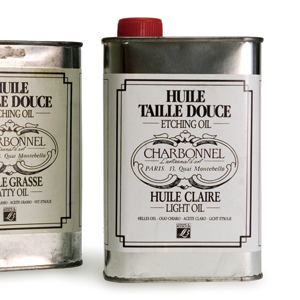
Plate Oil
プレートオイル
プレートオイル
Plate oil refers to burnt linseed oil which, in copper plate printing, is blended with pigment to make printing ink or to adjust the ink's viscosity. It is included in copper plate printing ink as a medium to fix the pigment on to the plate surfac
-
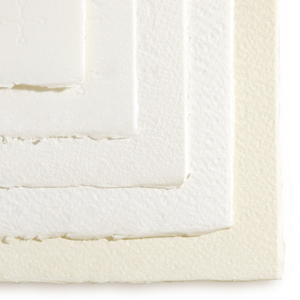
Fabriano Watercolor Paper
ファブリアーノ水彩紙
Faburiāno-suisaishi
Fabriano watercolor paper is watercolor paper produced by Fabriano of Italy such as Extra White, Fabriano Classico and Classico 5. It is an ideal paper for working with transparent watercolor, gouache, acrylic, ink and other water-based coloring mate
-

Fabriano Rosaspina
ファブリアーノ ロサスピーナ
Fabriano Rosaspina
Fabriano Rosaspina is a printmaking paper produced by the Fabriano paper mill in Italy, a time-honored paper manufacturer of Europe established in 1283, and is suitable for lithography, copper plate printing and screen printing. It is an acid-free
-

Waste Cloth
ウエス
Uesu
Waste cloth is used when producing paintings and prints to clean the tools and to make plates. The cloths used are often just rags and pieces of old clothes, and can be made of various fabrics depending on what they are used for, but preferably, t
-
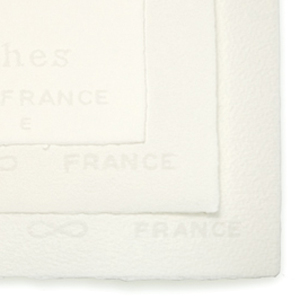
Arches Watercolor Paper
アルシュ水彩紙
Arushu-suisaishi
Arches watercolor paper is a product of the French company, Arjo Wiggins, made from 100% cotton pulp via a semi-mechanical process that is relatively similar to that of handmade paper. It is suited for use with water-based coloring materials such as
-

Art Paper
アート紙
Art-shi
Art paper is a type of coated paper with a specially treated surface (coated with an agent containing China clay and viscosifier, and subjected to high pressure) for enhanced smoothness and whiteness, with an elegant white tone and gloss that facilit
-

BFK Rives
BFKリーブ
BFK Rives
BFK Rives is a printmaking paper which is used widely around the world and is mainly suitable for lithography and copper plate printing. It is sometimes used as a back mounting paper when printing woodcuts on ganpishi paper. This product was devel
-

Hue Circle
色相環
Shikisoukan
A hue circle (also called color wheel or color circle) is a chart of hues around a circle and a method for organizing colors systematically. Differing wavelengths of light are perceived as a continuous spectrum of colors in the following sequence: re
-
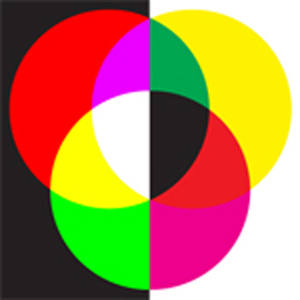
Three Primary Colors
三原色
Sangenshoku
The three colors that can be combined to create all other colors are called the three primary colors. Most colors can be made by blending several colors together but there are a few that cannot be produced through mixing. These are called primary col
-

Subtractive Mixture
減法混色
Genpoukonshoku
Subtractive mixture or subtractive color mixture is the phenomenon in which lightness is reduced with the mix of object colors. Color can be divided into light source color, which is the color of the light itself, and object color, which is the co
-
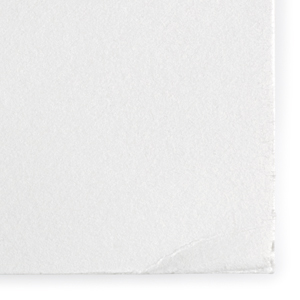
Blotting Paper
吸取紙
Suitorigami
Blotting paper is highly water absorbent because it has not been sized (treated to prevent ink from smudging) whatsoever. When printing with copper plates and woodblocks (mainly using water-based ink), the paper needs to be moistened first but if the
-
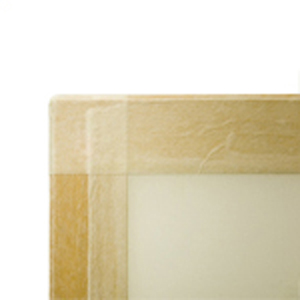
Eginu (Silk Canvas) and Kinuwaku (Canvas Frame) Sizes
絵絹・絹枠サイズ
Eginu/Kinuwakusaizu
In addition to washi and boards, Japanese paintings are also painted on silk canvases known as eginu which are silk fabric intricately woven with uniform thread density, mainly used for pictures mounted on hanging scrolls. The wooden frame which is u
-

Resin Powder
レジーヌ(ラズン)
Resin
Resin powder is a light yellow powder used on a lithograph plate to hold the ink or coloring material and to protect the lines on the image from the acid of the platemaking solution. It is made of residual resin (resine in French) left over after dis
-
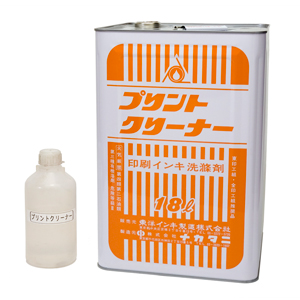
Print Cleaner
プリントクリーナー
Print Cleaner
A print cleaner is a petroleum based solvent used in various situations but mainly for cleaning when making prints. It is used in the process of making lithographs, as a painting oil medium, for cleaning oil-based ink, and for removing ground in copp
-
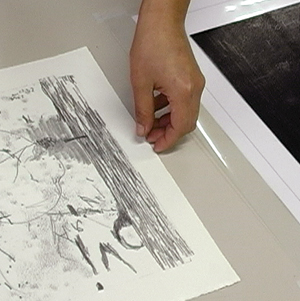
Transfer Technique
トランスファー技法
Transfer-Gihou
Transfer technique (or trace technique), is a type of monotype printing method. Ink or oil paint is spread evenly with a roller on a resin or glass plate and paper is then placed over the top. By applying pressure from the back of the paper by, for i
-
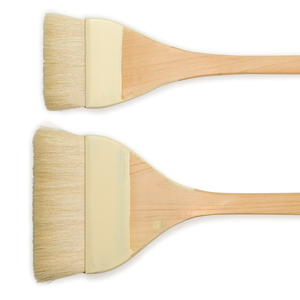
Dosa Sizing Brush
礬水刷毛
Dousabake
A dosa sizing brush is a brush that is used to apply dosa (sizing) when preparing for and working on a Japanese painting. It is mainly used for sizing washi and silk canvas so that the ink does not run, and for gilding with gold or silver leaf. Th
-
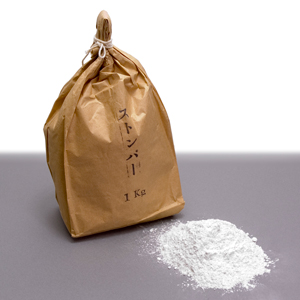
Talcum Powder (Stone Powder)
タルク(ストーンパウダー)
Talcum (Stone Powder)
Talcum powder is a white or light gray powder used on a lithograph plate to make the ink or coloring material hold and to protect the lines on the image from the acid of the platemaking solution. It is a fine powder produced by pulverizing talc (h
-
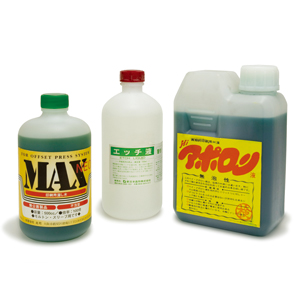
Etchant
エッチ液
Etch-eki
Etchant is an acidic compound solution used in lithograph printing to prevent thickness in drawing lines and ink smudges and to improve the moisture retention of the surface. It is used by adding a moderate amount to a dampening solution (the amou
-
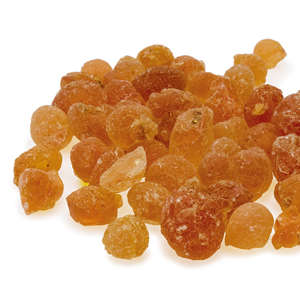
Gum Arabic
アラビアゴム
Arabia-gomu
Gum Arabic is a natural resin which is used as a raw material for the gum Arabic solution used in lithography and in printmaking solutions. It is also used as a binder in watercolor paint. Gum Arabic is produced by drying a resin mainly containing
-
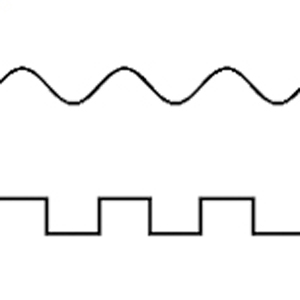
Hertz (Hz)
Hz
Herutsu
Hertz (Hz) is a unit of frequency and is used to indicate the frequency of sound waves and electromagnetic waves, etc. A single wave or vibration cycle in one second is represented as 1Hz. This unit is often used in connection with computers to in
-

Yoshi (Western Paper)
洋紙
Youshi
The term yoshi refers to paper that was introduced or imported from the West, as opposed to washi which refers to paper made domestically in Japan. Yoshi is also a general term for machine-made paper. The majority of drawing paper, Kent paper, waterc
-
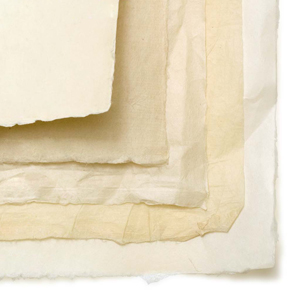
Washi
和紙
Washi
Washi, is a generic term for paper that has been used extensively in Japan from long ago as an integral part of life. It is made from distinct raw materials and developed through unique techniques. Even today, various types of hand-made washi are pro
-
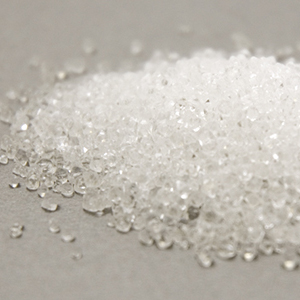
Hydrated Alum
生明礬
Kimyouban
Hydrated alum is one of the additives in the dosa solution used for sizing washi and silk canvas supports, etc. in Japanese painting. Hydrated alum is a material that has long been used in a number of applications including dyeing and the eliminat
-

Watercolor Paint
水彩絵具
Suisaienogu
Watercolor paint is a water-soluble paint made by mixing mainly pigment with gum arabic and other substances to enable it to adhere to the support element. There are transparent and opaque (gouache) types with different covering capacities. Watercolo
-
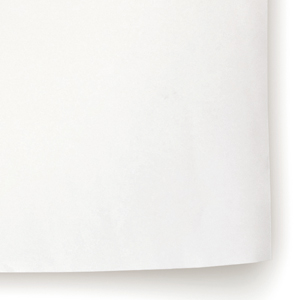
Imitation Japanese Vellum
模造紙
Mozoushi
Imitation Japanese vellum (mozoshi) is a large-size sheet of paper. Because of its smooth surface, pencils and crayons, etc. travel well over it and it is ideal for drawing or sketching. It is thin and there is little difference in the texture of
-
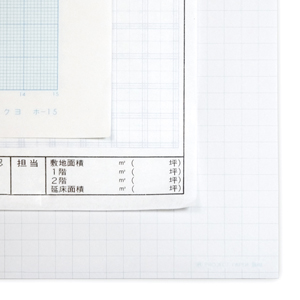
Graph Paper
方眼紙
Houganshi
Graph paper is writing paper with equally spaced horizontal and vertical lines printed in a grid. General types are comprised of 1 mm squares (each side of the square grid being 1 mm) or 5 mm squares, and some have bold grid lines every 10 mm. The gr
-

Flat Brushes (For Japanese Painting)
平筆(日本画用)
Hirafude
Flat brushes have a slightly wide, flat base and a tip made of quality sheep wool trimmed in a straight line. They are used to lay down a flat wash over a relatively wide area. They come in various widths, ranging from size 0 (approx. 0.5 cm) to a
-

Nenshi
念紙
Nenshi
Nenshi is a piece of paper coated with mud pigment or charcoal powder, etc. used in Japanese painting to transfer a rough sketch to the final work. It is also used in lithography to copy a design from the matte film to the plate. Japanese painting
-

Croquis Books
クロッキーブック
Croquis Books
Croquis books are thin sheets of paper with smooth surfaces bound into booklets and mostly used for Croquis, Esquisse (preliminary sketches) and sketching ideas. The paper is generally high-quality writing paper and non-wood pulp paper (made from
-

Carbon Paper
カーボン紙
Kābonshi
Carbon paper comprises colorant mixed and kneaded with oil and wax and laid over thin paper (carbonizing base paper). It is used for copying text and diagrams. It is generally used for copying office documents and forms, etc. but when creating block
-
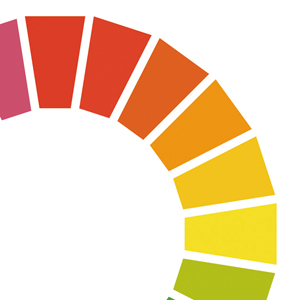
Hues
色相
Shikisou
Hues are tints such as red, yellow, green and blue that define color and are one of its three attributes (hue, value and intensity). Tints vary in different light wavelengths. Light is an electromagnetic wave. If it is of a wavelength in the spect
-

Iwa-enogu (Mineral Pigment)
岩絵具
Iwaenogu
Iwa-enogu is Japanese paint made from particles of pulverized rock, mainly minerals. The particles have a similar coarseness to sand and feature a lusterless matt feeling. The paint itself has no adhesive properties, but by adding glue, it sticks to
-
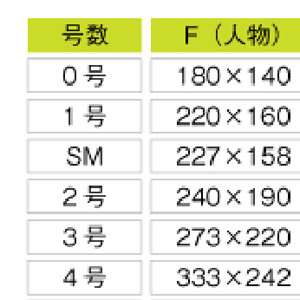
Standard Canvas Sizes
絵画標準サイズ
Kaigahyoujunsaizu
Many canvases and wood panels, etc. used for art generally have specified dimensions annotated by a numeric designator. Those used in Japan today were originally based on French specifications expressed using the Japanese measurement units shaku and
-
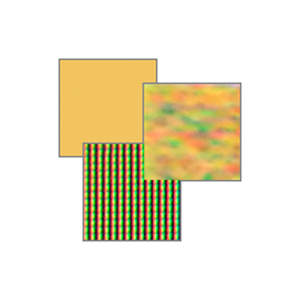
Dot
ドット
Dot
When the word, "dot", is used in relation to computer images and data input/output devices, "dot" can be assumed to indicate the smallest element in designating precision. The unit, dpi (dots per inch), for example, is used for the resolution of b
-
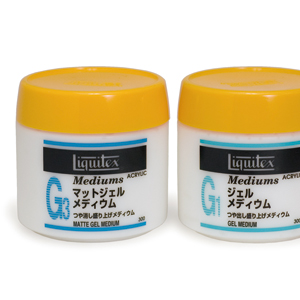
Gel Medium (Acrylic Resin)
ジェルメディウム(アクリル樹脂系)
Gel Medium (Akurirujushikei)
A gel medium is an acrylic resin with water soluble properties. It is used in a variety of works to bring out the luster and add volume to acrylic paint, adjust the transparency, etc., fix collages and produce texture. The main ingredient of gel m
-

DVD
DVD
DVD
Digital Versatile Disc (DVD), or DVD-Video as it is known, is an optical recording medium capable of recording videos over an extended period. Its media composition, geometry and data recording and reading methods are basically the same as those o
-
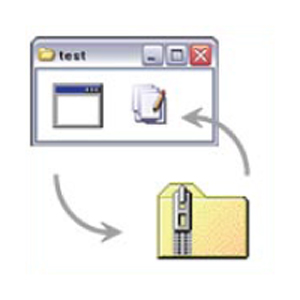
Lossless Compression
可逆圧縮
Kagyakuasshuku
The compression method in which the original data can be restored from the compressed data is called lossless compression. It would be meaningless to compress and reduce the size of text and program data if data is lost in the process. That is why lo
-
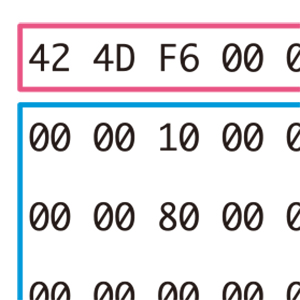
File Format
ファイルフォーマット
File Format
A computer handles various data such as text, image, audio and video in files. The specific way in which data is stored in a file is called the file format. All data processed on a computer are binary data that can be expressed in 0s and 1s. In ot
-
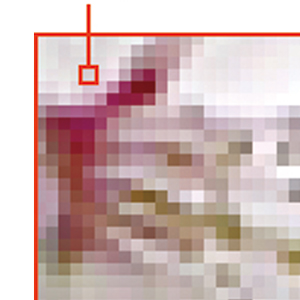
Pixel
ピクセル
Pixel
A pixel is the smallest element in the composition of bitmap data. It is an abbreviation of the word, picture element, and the word for it in Japanese is gaso. Digitized bitmap data images read by scanner or from digital camera photographs are typ
-
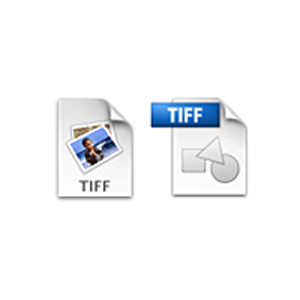
TIFF
TIFF
TIFF
TIFF is the abbreviation for Tagged Image File Format and is a bitmap data file format. It carries the extension, .tif. Using codes called tags to recognize data content enables information related to images to be stored in files. It is compatible
-

PSD
PSD
PSD
PSD is a bitmap data file format and is the native file format to the graphics editing software, Adobe Photoshop. It carries the extension, .psd. It is also known as the Photoshop format. Adobe Photoshop is a multifunctional graphics processing so
-
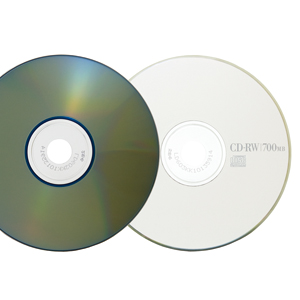
CD-RW
CD-RW
CD-RW
CD-Rewritable (CD-RW) is a rewritable medium which uses a metal phase transitioning material in the recording layer (specified in Orange Book Part III) and records information by converting the crystalline state of the material to a non-crystalline (
-
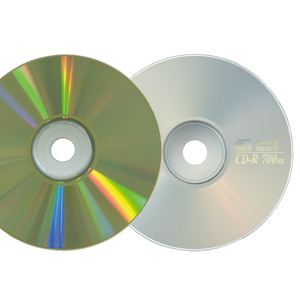
CD-R
CD-R
CD-R
CD-Recordable (CD-R) (specified in Orange Book Part II) is a recordable medium that uses organic dyes such as azo, cyanine and phthalocyanine on the recording layer and records information by degradation and dissipation of the dye with heat from a la
-

Bit
Bit
Bit
When a computer processes information, it usually does so by expressing that information in 0s and 1s (binary digit expression). The smallest unit of that information (a single digit of binary data) is called a bit. This is the shortened version of t
-
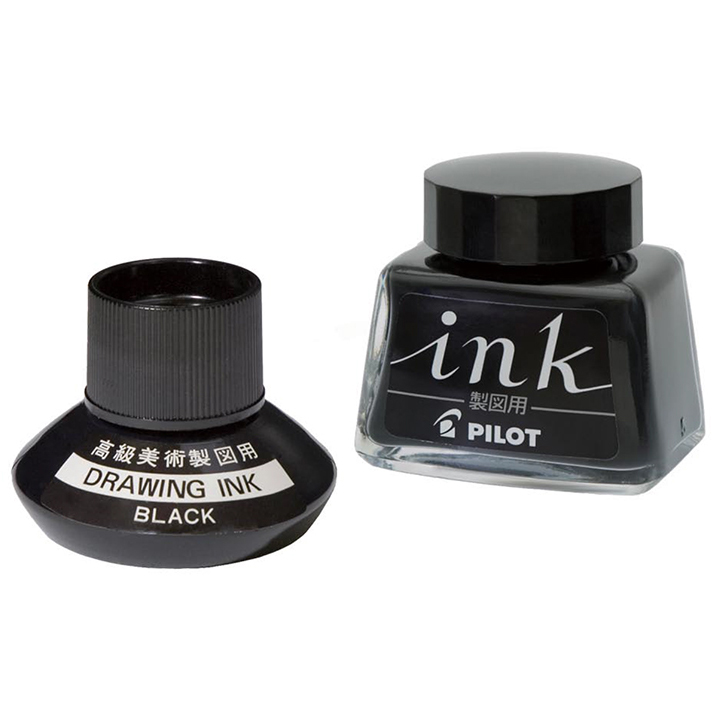
Drawing Ink
製図用インク
Seizuyouinku
Drawing ink is produced by using pigment as a colorant mixed with a fixative such as glue in soot. It is known for its resistance to water and light and for its strong fixing properties. It is mainly used in the preparation of blueprints that are to
-

Pen Ink
ペンインク
Pen Ink
Pen ink is the ink used for general writing purposes. The most commonly known types today are the long used blue-black ink as well as the pigment-based carbon black ink and water-soluble dye colored ink, both of which were developed to overcome the s
-
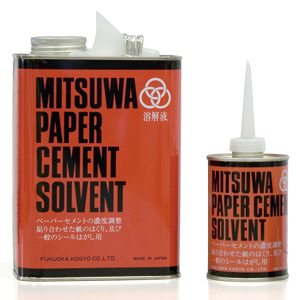
Solvent
ソルベント
Solvent
Solvent, mainly made of organic ingredients, is used as a thinner to adjust the concentration of paper cement. It can also be used to peel off pieces of paper that have been pasted together with paper cement. Solvent is sold in cans but it is usef
-

DVD-R, DVD-RW
DVD-R・DVD-RW
DVD-R, DVD-RW
DVD-R (DVD-Recordable) is a recordable medium with an organic dye in its recording layer which does not allow data to be rewritten or deleted once it is written on the disc. DVD-RW (DVD-Rewritable), on the other hand, is a rewritable medium with a me
-

Recording Media
記録メディア
Kirokumedia
At the dawn of the history of the computer, paper punch tape and cards were used as recording media but today, methods such as magnetic, optical, optical magnetic and semiconductor recording are used in the materials and devices for recording informa
-

Floppy Disk
フロッピーディスク
Floppy Disk
A floppy disk is a removable, rewritable magnetic recording medium comprising a disk-shaped polymer sheet coated with magnetic material on the front and back, encased in a jacket. It is sometimes also referred to as a flexible disk. In the 1970s,
-
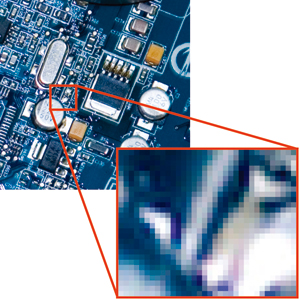
Bitmap Data & Raster Data
ビットマップデータ・ラスターデータ
Bitmap Data, Raster Data
Bitmap data and raster data is the format for displaying images as a cluster of pixels. Images are digitized when photographed by a digital camera or scanned. Sampling and quantizing are required for digitizing analog content. Sampling is the brea
-

WAVE
WAVE
WAVE
When converting analog sound into digital data, it needs to go through a sampling and quantizing analog - digital (A-D) conversion process. The digitization of sound in this way is known as PCM (Pulse Code Modulation). WAVE is one of the principal
-

PNG
PNG
PNG
PNG, short for Portable Network Graphics, is a bitmap data file format. The file extension for it is ".png". PNG is a lossless compression file format for use on networks supporting 8-bit and 24-bit colors with the ability to achieve image transpare
-
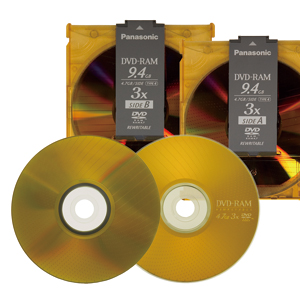
DVD-RAM
DVD-RAM
DVD-RAM
DVD-RAM (DVD-Random Access Memory) is a rewritable medium which uses a metal phase transitioning material in the recording layer, has hardware defect management and identical specifications to magnetic recording media. Consequently, data can be delet
-

DVD+R, DVD+RW
DVD+R, DVD+RW
DVD+R・DVD+RW
DVD+R (DVD Recordable) is a recordable medium with an organic dye in its recording layer which does not allow data to be rewritten or deleted once it is written on the disc. DVD+RW (DVD Rewritable), on the other hand, is a rewritable medium with a me
-

CD
CD
CD
Generally, the term CD refers to a CD-DA (Compact Disc Digital Audio), but it is also a general term for an optical disc with a diameter of either 80mm or 120mm and a capacity of up to 700MB. CD-ROM, Photo CD, CD-R, and CD-RW are some of the logos an
-

Lossy Compression
非可逆圧縮
Hikagyakuasshuku
If data is deleted to reduce the size during compression, that data cannot be restored. This type of compression method in which the original data cannot be restored from the compressed data is referred to as lossy compression. Because image, audio a
-
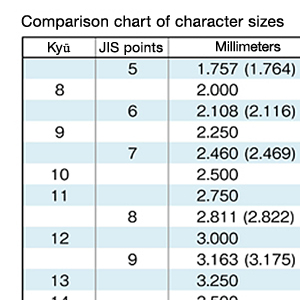
Kyū, Ha, Point
級・歯・ポイント
Kyū・Ha・Pointo
Kyū (級) is a unit of measurement used to express the size of characters in photocomposition that is particular to Japan; it is equal to 0.25mm. It can also be written as “Q,” an abbreviation that is derived from the origin of its name, “quarter,” as
-
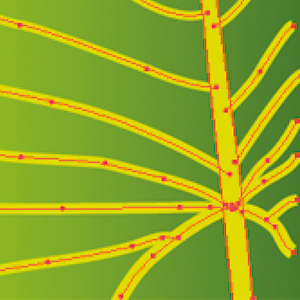
Vector Data
ベクターデータ
Vector Data
Vector graphics data describe shapes in a multidimensional space as coordinates and functions of shape attributes. They are primarily used in applications of the “draw” variety (e.g., Illustrator from Adobe Systems and the open source software Inksca
-
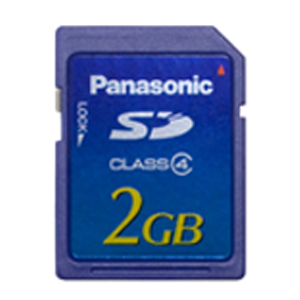
Flash Memory
フラッシュメモリ
Flash Memory
Among the different types of semiconductor memory recordable media, flash memory is the general name for a group of products including CompactFlash, SD memory cards (including mini and micro), USB data storage drives, which are made up of EEPROM (Ele
-
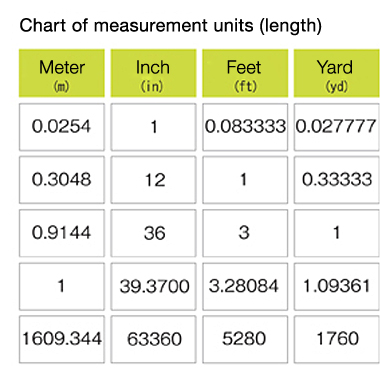
Inch
インチ
Inch
An inch (in.) is a unit of measurement used to express length or distance in the imperial system. Other units in this system include feet (ft.) and yards (yd.), which also express length or distance, and pounds (lb.), which express weight. 1 yard =
-

MO
MO
MO
A Magneto-Optical Disc (MO) is a removable, rewritable storage medium, which comes in both 5.25-inch and 3.5-inch sizes. The 3.5-inch size is the more commonly used size with personal computers. The discs come in six different sizes of storage capaci
-
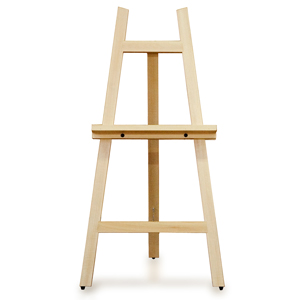
Easel
イーゼル
Easel
When making a sketch or pictorial composition, an artist uses an easel to hold the support medium, carton, or other similar object in place at a comfortable height. Although there are many types of easels designed for different sizes of support me
-

PDF
PDF
PDF
PDF (Portable Document Format) is a file format for electronic documents. PDF files use the “.pdf” filename extension.
Originally released in 1993 by Adobe Systems, Inc., the PDF format is now standardized under t
-
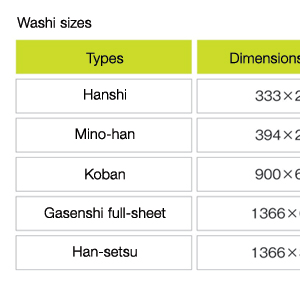
Washi Sizes
和紙サイズ
Washisaizu
Washi is a style of paper that was developed in Japan after being brought over from China in ancient times. Washi size is generally determined by the sizes of the “sukisu” and “keta” tools used to strain the paper. As individual strainers make mod
-
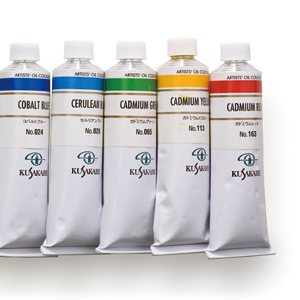
Oil Paint
油絵具
Aburaenogu
Oil paint, mostly made by kneading together pigment and drying oil that sets the pigment in place, features a distinctive luster and transparency that only oil can create, a degree of plasticity that enables expressive touch and piling, and a gradual
-
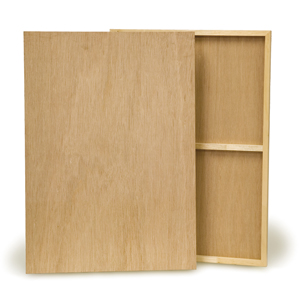
Wood Panel
木製パネル
Mokusei-paneru
A wood panel is a veneer plywood-based support medium reinforced with squared timber and used in all types of painting, including oil. In pencil sketches, watercolors, nihonga, and other formats that use paper for their support media, stretching damp
-
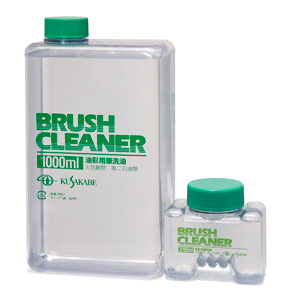
Brush-cleaning Fluid
筆洗油(ブラシクリーナー)
Hissen-yu
Brush-cleaning fluid is a solution made from refined oil and used to clean oil paint brushes. To use brush-cleaning fluid, pour enough of the fluid into your container (a brush-cleaning container) to submerge the heads of the brushes in the fluid. Wh
-

Full-sheet Size
全紙サイズ
Zenshisaizu
Full-sheet size corresponds to the largest size of any of the various standard sheets of paper. In Japan, the main sizes used for photocopying and book publication are the JIS (Japanese Industrial Standard) and the ISO (International Organization for
-
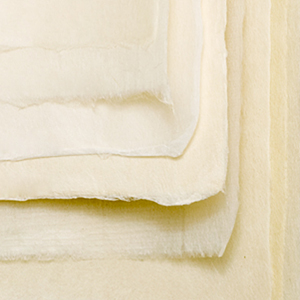
Kōzoshi (Japanese Mulberry Paper)
楮紙
Kōzoshi
Made from paper mulberry, kōzoshi is a strong yet light and supple type of handmade Japanese paper. The paper has many different uses—from applications in painting as a support and lining paper of Japanese-style paintings (nihonga) and paper for wood
-

Charcoal Paper
木炭紙
Mokutanshi
Charcoal paper is used with drawing materials that do not fix to surfaces well, particularly charcoal. Made with regular striped indentations on its surface, charcoal paper fixes color (such as charcoal) effectively, enabling a rich range of drawing
-
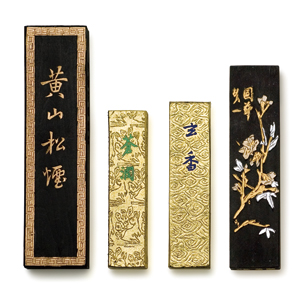
Inksticks (Sumi)
墨
Sumi
Inksticks are created from the soot of burned oil or burned pinewood, which is then bound with glue, hardened by kneading, and dried. The block is then rubbed together with water in an ink stone to produce liquid ink. As the saying has it, sumi ni go
-

Printing Block
版木
Hangi
A printing block is a wooden board that artists use as a plate material when creating woodblock prints. There are two basic types of printing blocks: a cross-grain type, cut vertically to go with the fiber of the wood, and an end-grain type, cut i
-

Copperplate Ink
銅版画用インク
Dōhangayōinku
Copperplate ink is an oil-based ink used in intaglio printing (ōhan), which can be made by mixing the paint with extender pigments such as aluminum hydroxide and burnt linseed or plate oil (as mediums), then knead them together. Copperplate ink co
-

Torinoko Paper
鳥の子紙
Torinokoshi
Torinoko paper—literally “hen’s egg” paper—is a hand-made washi of a lustrous, smooth, and intricate texture whose chief ingredient is gampi (diplomorpha sikokiana). It is used as a support medium in Japanese art, block-print paper in woodcut printin
-

Line-drawing Brush
線描筆
Senbyōfude
The line-drawing brush (senbyō fude) does precisely what its name suggests: it draws thin lines. Artists can select brushes made from the furs of different animal species or fashioned with different tip shapes depending on the type of lines they want
-

Watercolor Paper
水彩紙
Suisaishi
Watercolor paper is a general term for any exclusive paper used in drawings that employ water-based paints such as transparent or non-transparent watercolors. Because the expressions of watercolor paintings are created by the manner in which the w
-

Drawing Paper
画用紙
Gayōshi
Drawing paper is very versatile and one of the most common surfaces used for pencil and pen drawings, watercolor, and crafts. Drawing paper has a fine to medium surface texture with moderate stiffness that gives it a unique quality of feel. Paperm
-

Kent Paper
ケント紙
Kent-shi
Kent paper is paper that derives its name from the Kent region in England. In most cases it is made entirely from chemical pulp. It is very smooth, has a moderate amount of elasticity and thickness, and is well-suited for many drawing materials and w
-
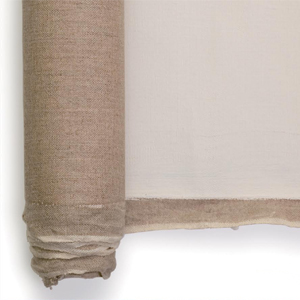
Canvases
キャンバス
Canvases
A canvas is a medium for oil painting made of cloth woven from the fibers such as flax, the top surface of which has been treated. The word can also refer to such a cloth after it has been attached to a wooden rectangle (a stretched canvas). Compa
-
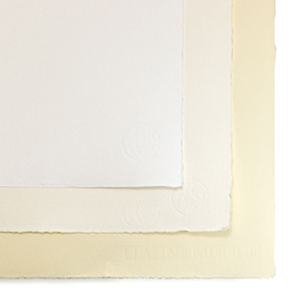
Hahnemuhle
ハーネミューレ
Hahnemuhle
Hahnemuhle, made by the German paper manufacturer Hahnemuhle FineArt, Inc. (founded in 1584), is a form of print paper suitable for copperplate and other intaglio applications. A neutralized paper derived from cotton pulp (100%), Hahnemuhle is adequa
-
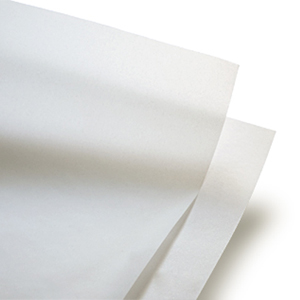
Tracing Paper
トレーシングペーパー
Tracing Paper
Tracing paper is a translucent type of paper made by refining and processing pulp, the main raw material in paper, to a high degree. It is also called tōshashi or torepe in Japanese. The translucent quality of the paper lends the medium well to tr
-

Styrene Board
スチレンボード
Styrene Board
Made of fine polystyrene foam bubbles, styrene board is used to model architecture and interior spaces and other presentations or displays. It is lightweight and can be cut and processed easily with a cutter. Styrene boards come either with or withou
-
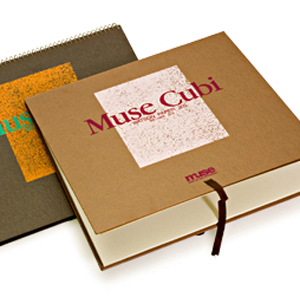
Sketchbook
スケッチブック
Sketchbook
A sketchbook contains drawing or watercolor paper bound like the pages of a notebook between front and back covers made of cardboard. The sketchbook is portable and has paper that resists tears, making it ideal for sketching outdoors. The bound paper
-

PM Pads
PMパッド
PM Pads
PM pads are a type of paper often used in design layout work. Its thickness is comparable to that of copy paper. The name "PM pad" comes from "pastel marker," but the paper is used with a wide variety of writing instruments and drawing materials. Bec
-
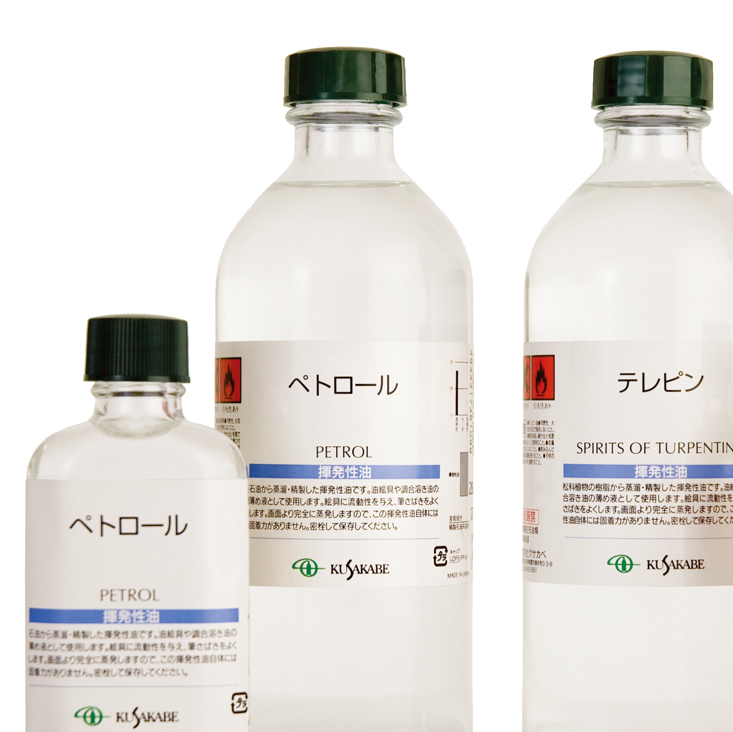
Essential Oils
揮発性油
Kihatsuseiyu
Essential oils, including turpentine and mineral spirits, are used as solvents when making one's own varnish, because of their efficacy in adjusting the viscosity and thickness of oil-based paints, accelerating drying, diluting drying oils, and disso
-
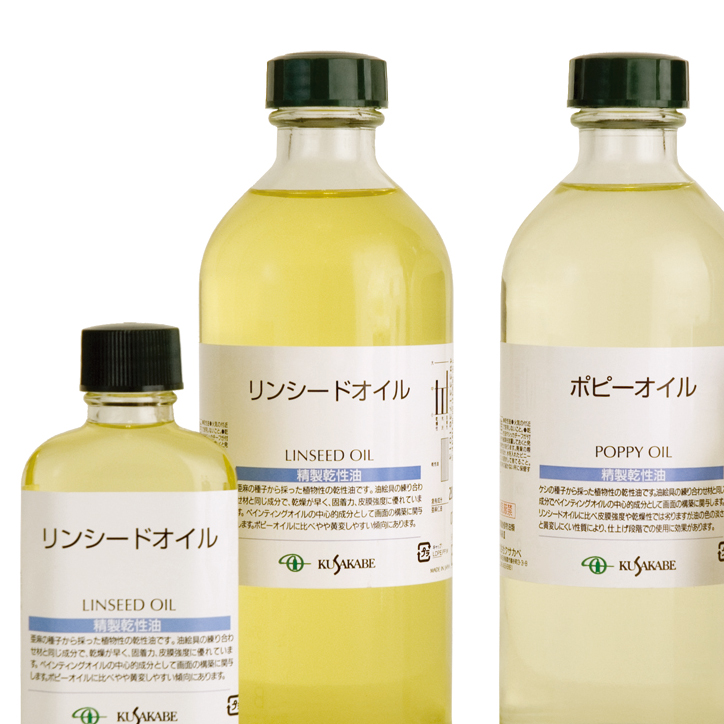
Drying Oils
乾性油
Kanseiyu
Drying oils, including linseed oil and poppy oil, are used in painting in order to adjust the thickness of the paints, improve their stretchability, increase the fixativity of the paints to the surface, and give oil paints their characteristic luster
-
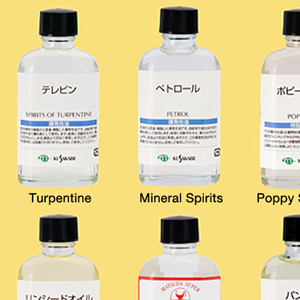
Art Solutions
画溶液
Gayōeki
Art solutions (extracted oils) are supplementary paint solutions used when painting with oil-based paints. They are able to enhance the expressiveness of paints and to produce various effects. There are a variety of solutions used for various purp
-

Linseed Oil
リンシードオイル
Linseed Oil
Linseed oil is used in painting to increase the fixing strength of oil paints, adjust their thickness and viscosity, and to enhance luster. It is also blended into paints as the fixing ingredient (medium) to affix the pigment to the surface of the pa
-
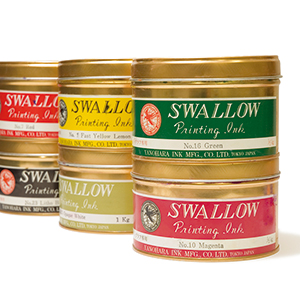
Printing Ink (For Lithographs)
プリントインク(リトグラフ用)
Printing Ink
The printing ink used for lithographs is made by combining linseed oil with pigments. There is another type of printing ink, a fast-drying type made from resin that is used in offset printing, but it is best not to use this ink by itself when prin
-
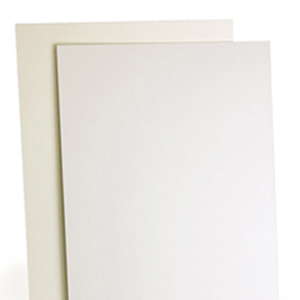
Illustration Boards
イラストレーションボード
Illustration Boards
Illustration boards are surfaces made by giving paper for different purposes with specific usage such as watercolor paper or color paper a backing made of thick paper (cardboard or posterboard). In addition to being a medium for illustrations and ren
-
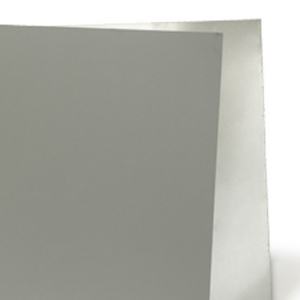
Aluminum Litho Plates
アルミ板
Alumi Ban
Aluminum Litho plates are metallic (aluminum) plates that are used for lithograph prints; when one roughens one face in order to turn it into a surface for printing. Although stones were originally used for lithographic prints, a number of problem
-
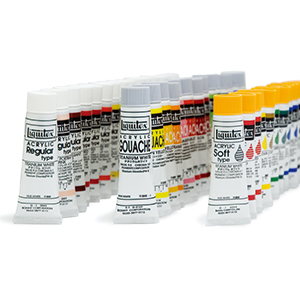
Acrylic Paints
アクリル絵具
Acrylic Enogu
Acrylic paints are a type of water-soluble paint that uses the acrylic polymers invented in the twentieth century. They were originally developed for the painting of murals. The paint is composed of the same pigments and binders used by oil paints, c
-

JPEG
JPEG
JPEG
JPEG is one compression method for bitmap image data files. (Originally it was an acronym of the Joint Photographic Experts Group, which developed the compression format.) The human eye is more sensitive to changes in brightness than in hue, and t
-

GIF
GIF
GIF
GIF, an abbreviation of Graphics Interchange Format, is one format for bitmap image data files. Its extension is “.gif.” This file format, which utilizes the LZW data compression technique, supports 8-bit (256 color) indexed color. Because it only
-
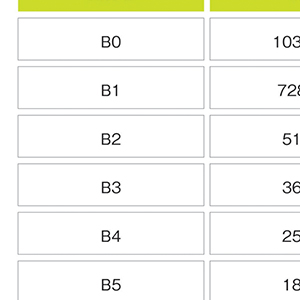
B-series Paper Sizes
B列用紙サイズ
B-series Paper Sizes
The B-series standard, which ranges from B0-B10, is based on a 1.5㎡ sheet (B0, or full B sheet) with each successive size defined as half of the preceding size, dividing the sheet in the middle of the longer side. The ratio of the length of the short
-

A-series Paper Sizes
A列用紙サイズ
A-series Paper Sizes
The A-series standard, which ranges from A0-A10, is based on a 1㎡ sheet (A0, full A sheet) with each successive size defined as half of the preceding size, dividing the sheet in the middle of the longer side. The ratio of the length of the short side
-

Stretcher Frames
木枠
Kiwaku
Stretcher frames are the rectangular wooden frames upon which canvases, primarily those used as the surfaces for oil paintings, are stretched. They are also known as canvas frames. The fundamental structure of a stretcher frame is made up of wood
